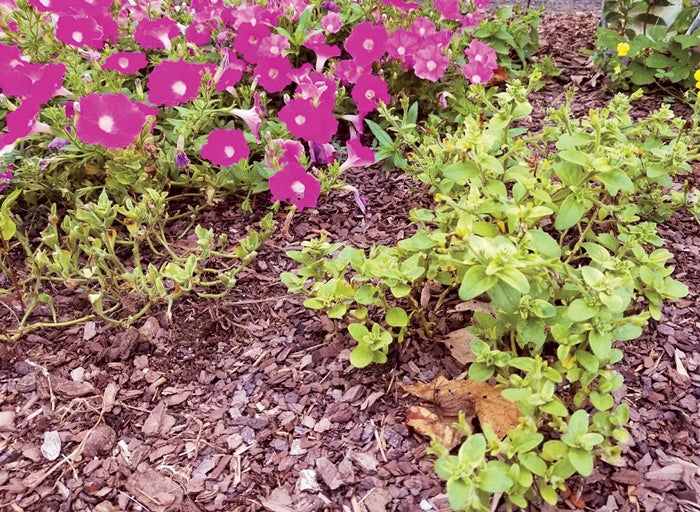Darrell Blackwelder: Why bedding plants don’t thrive
Published 12:00 am Friday, June 23, 2017

- Submitted photo Stunted petunias could be caused by a number of problems. Bedding plants that don't grow should be replaced.
Ever wonder why there are sometimes a few bedding plants that never seem to do well in your flower beds?
You’ve planted the bed and all the plants are doing well — except for a few scattered plants throughout the planting. The plants have received the same amount of fertilizer and water, but some are just not growing. Stunted vegetable and bedding plants are a common problem. The problem can happen to the best gardeners.
There are many possible causes for the disorder. Below are a few that may be causing the problem.
• Root rot — bedding plant roots are brown and discolored. Check the roots of the bedding plants before planting. They should be loosely matted, white and healthy. Avoid planting plants with rotted or decaying roots.
• Poor drainage/too much water — parts of the planting area may have poor soil drainage or standing water. Poor soil drainage kills bedding and vegetable plants much more quickly than droughts. Overwatering is a common problem with overly zealous gardening rookies.
• Insects — soil borne insects are a serious problem on newly tilled soil that contain excessive plant debris. Immature insects lay in waiting to feed on new roots in newly tilled soil. Till the planting area early and allow the tilled area to stand for at least a month before planting to allow debris to decompose and lessen the chance of immature insect damage.
• Injured roots — often we get excited and damage fragile bedding plant roots during the planting process. Press the bottoms of plant cups gently to better release the newly formed roots and planting material. Make sure the soil is well tilled and gently mound the soil around the roots before planting.
• Immature or overly mature plants — often plants are just not mature enough to plant. Check the roots of the bedding plants before purchase. They should be well developed, healthy and white and gently matted in the planting cell. Avoid small, immature plants with weak root systems or plants that have been on the shelf for an extended period with exposed roots growing from the planting cells.
• Nutrient disorder — make sure that you fertilized the entire area evenly. If a certain section of the bed is failing, the problem may be nutritional. Yellowing plants may indicate nitrogen deficiency while a dark green dwarfing plant may indicate a trace element deficiency such as boron. If the problem seems to occur each year, have that area of the soil tested and compare with soils of adequately performing plants. Without a soil test, you’re only guessing as to how to alleviate the problem.
• Plant growth regulators — Growers often use growth regulators to keep plants uniform and compact. Ever notice how all the bedding plants look the same size? Growth regulators correctly applied do not cause a problem with plant growth and development, but if plants get a heavy or extra dose, the plants will just sit there and not grow. They maintain the same size for weeks. Often mildly stunted plants will outgrow the problem. However, plants with an excessive dose will never recover. In early spring, the lack of growth and excessively dark green color is another indicator of a plant growth regulator overdose.
So, what should you do if you have stunted bedding plants? If stunted plants look no better and fail to recover within two weeks after remediation, pull them up and replant. Stunted plants make good plants in a planting area look bad.
Darrell Blackwelder retired as Cooperative Extension Director in Rowan County.



